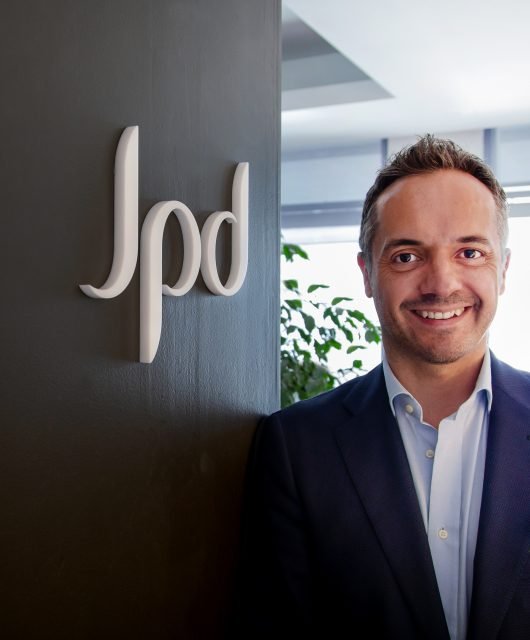10 Mistakes Consumer Goods Companies Make When Expanding Into New Geographies Or New Categories
By: Xavier Fontaine, Founder of Qiáo Consulting

Expanding into new geographies or new categories is a great source of incremental growth which can contribute to bring businesses to the next level of scale. Hardly anyone would debate it. However these expansions are full of pitfalls and can quickly turn into expensive daunting tasks to global executive and local management teams.
Leveraging our experience of former CPG operators and strategic consultants, we drilled into expansions great case studies as much as painful crash stories. This helped us codify 10 mistakes that CPG typically do when expanding into new categories or geographies. The good news is that these mistakes can be mitigated through proper strategic planning. We developed an Expansion Strategic Cockpit to help CPG/FMCG companies structure and de-risk their expansion program, whether looking at expanding into new markets or categories.
Based on our analysis and experience we believe successful business expansion comes down to getting 3 things right: get your value proposition right, be selective when making your go-to-market launch choices, invest in getting the talents and capabilities right from the beginning.
Typical mistakes we observe are:
Not the right Value Proposition
#1 No role in the category. Let’s face it: we all get excited about our “new latest innovation”. But how much can we answer the following questions before taking the decision to launch: which consumer pain point is the novelty solving? What will it bring to the category? Why would our trade partner and customers benefit from this launch?
#2 Not tuned to local insights. How much have we interrogated local consumer needs first before expanding? How much do we know about the local consumers & shoppers? Fundamental needs tend to be universal and global, experience shows that product routines and category perceptions tend to be very local. Ignoring it can quickly turn into a dead end.
#3 No consumer-centric approach to pricing. How have we set our strategic pricing? Through a bottom-up approach (start with COGS and gross margin targets in mind), a top-down approach (deep understanding of local key price thresholds), or a combined approach? What’s our 18 months consumer pricing forecast in an unprecedented inflation context?
#4 The product does not perform. Which key quality attributes are critical to local consumers (this may vary by market)? Is our product engineered to meet these quality attributes? How does it perform against its direct local competitors?
Case study
Chocolate brand going into ice-cream, China
Context. Global chocolate brand X’s penetration was stagnant for years in China, despite significant marketing spent and new launches in the chocolate category.
Transformational actions. Through local insights immersion plan the business team discovered that pure chocolate was perceived unhealthy by Chinese Mums as it “raises the blood heat” (heritage from Traditional Chinese Medicine); therefore can only be consumed occasionally. Whilst something “with chocolate” eg ice-cream was much more balanced, therefore less “harmful” for daily consumption. This is of course all about perceptions, but perception is queen when making the shopping decision.
Results. By understanding the holistic category penetration barriers the business team could successfully introduce ice-cream under global brand X to continue develop its penetration.
Case study
Chewing Gums strategic pricing reset, Europe
Context. Company X, amongst market leaders in its category, crossed most key price thresholds in its major European markets. The root cause was a lack of strategic pricing capabilities: consumer prices were set by looking at COGS (Cost of Goods) rather than having a thorough understanding of the consumer key price thresholds. This lead to a stagnant, then declining category penetration in most European markets.
Transformational actions. By building strategic pricing capabilities, the business teams could reset the entire portfolio pack-price architecture with a consumer centric approach.
Results. The chewing gums category retuned top growth in a number of strategic markets.
Launch Go-To-Market not focused enough, or lacking quality of execution
#5 Sales omni-channel strategy is not enough focused, or planned for scale. Have we identified the strategic customers we want to work with today? Tomorrow? Have we decided where not to play? Have we anticipated how the trade landscape will evolve in the next 2-3 years, and the implications to our expansion plan? How much do we want to sell online vs offline over horizon? Is the rising social-commerce an opportunity to our industry? How are you measuring the quality of the execution? How fast will you be able to take corrective actions?
#6 Media reach strategy is not focused on getting early adopters. The cost of media is inflating globally with no signal of deflation. “Big bang launches” always remain an option however it comes at unprecedented costs, creating a barrier to entry or slowing down go-to-market decisions. Smart brand launches start by identifying their early adopters first, and focus their marketing efforts in turning them into shoppers and advocates, because scaling to a broader audience. Who are our desired first adopters? What do we know about them? Which circles of influence can be leveraged to reach them effectively?
#7 There is not enough funding to support the expansion strategy. Can we fund our launch strategy, can we afford all choices made on the paper? Which implications in the first 6, 12, 24 months of the launch? After 2 years? What if the core business would start facing difficult times, would the investment feeling the expansion “being protected”?
Case study
Baby care brand expanding into China
Context. Global Baby care brand X -very successful in the Western World- decided to expand into China with a focus on online retailers.
Situation. Despite its modest go-to-market budgets it decided to start the launch with a focus on the traditional mainstream e-retailers T-mall (Alibaba group) and JD. These retailers offer high traffic, but also requested high investments to generate (paid) reach in the first 18 months of launch.
No long term realistic plan was contracted on how much it will cost to win in China, neither how long to breakeven.
Results. The business team failed to identify its early adopters and spread instead its marketing and sales efforts on trying to fix traffic on large scale e-retailers despite high competition and costs of entry. After 18 months of unsuccessful trial and financial loses, the brand withdrew from China.
Case study
Context. Global candy brand X had the great ambition to grow by trading-up a commoditised category in India. It built a solid value proposition to attract urban youth in Indian key cities, the target group it primarily identified.
Transformational actions. The next key challenge was to build a focused sales roadmap given the fragmented and fast changing Trade structure. Through an SCM approach (Strategic Channel Mapping) the business team built its 3 years plan to expand its distribution, focused on attracting its prime adopters first in 3 tier one cities before expanding to a broader geographic scale and audience.
Results. Being laser focusing and realistic in target setting helped the team over-achieve year one and gain confidence for year 2 and beyond.
Not the right Talents & Capabilities
#8 Not the right quality Talents or Organisation in place. Have we invested in the best talents, who will lead the project and make the expansion work? Are the talents capable of dealing with unprecedented levels of ambiguity (by the nature of the new businesses to put in place and manage)? Do we have the right calibers in place? Do we have the right size and organisation design to make it work?
#9 Not the right systems and processes to support the expansion. Which degree of autonomy does our “new expansion” team need to have, to be lean and agile? Which degree of support does the team need from the bigger business and other functions/units to be successful? Which processes are in place to help them act with agility and pace, whilst reporting progress and business results to the senior executives?
#10 Not enough business patience to build the expansion. How will success look like, top and bottom line in year 1, 2 and beyond? When does the expansion need to breakeven? Is the investment protected, no matter to what will happen to the core business? Are all key stakeholders aligned to the vision and game plan?
Case study
Confidential CPG Category and Geography
Context. Global business X planned to introduce a new adjacent category to its core business, in country Y. It appointed a business team Z to lead the development of the value proposition, the go-to-market and the launch strategy. The business team Z was mandated to work on two distinct phases (design / deploy) with an appropriated level of autonomy to drive the project at high pace and with an external focus.
Situation. Business team Z had a fair amount of flexibility and autonomy during the first phase of the project (design), which helped complete the design program in less than 15 months. After 15 months the Business reviewed the plans, and decided to go ahead and launch as an “internal start-up”.
As soon as phase 2 started (deployment) the Business applied the exact same processes and governance to the recently created start-up, than to it multi-million dollars core business.
Results. Business team Z lost in agility and shift focus from external to internal, spending more time managing internal stakeholders than building external strategic alliances. The pace of action slowed, and the team morale got impacted as they felt micro-managed.
Case study
Confidential Category, APAC region expansion
Context. Global consortium X planned to expand its core business to APAC (Asia-Pacific) region. It identified and prioritised a short list of markets for immediate launch. It invested in building the teams, the value proposition and the go-to-market strategies. Launches happen according to plan.
Situation. Two years after the launch, its primary region (Europe) got under trouble and requested more investment. The business decided to shift investment back to the European business to secure its core, and stopped over-investing in APAC.
In a world of uncertainty these situations are quite common. What was missing in this case study? The business did not invest enough in building a “what if” scenario, looking at anticipating change and planning ahead in case things will get tougher in Europe.
Results. The business had to withdraw from a number of APAC markets as could not sustain all investments.
Time to hear back from you!
Which mistakes do you see repeated all over again when expanding into new categories or geographies? Which new perspective or action has this White Paper inspired?
Please send your thoughts on the Brandberries platform or to info@qiaoconsulting.com
Disclaimer: all rights belong to SAS Qiao Consulting





